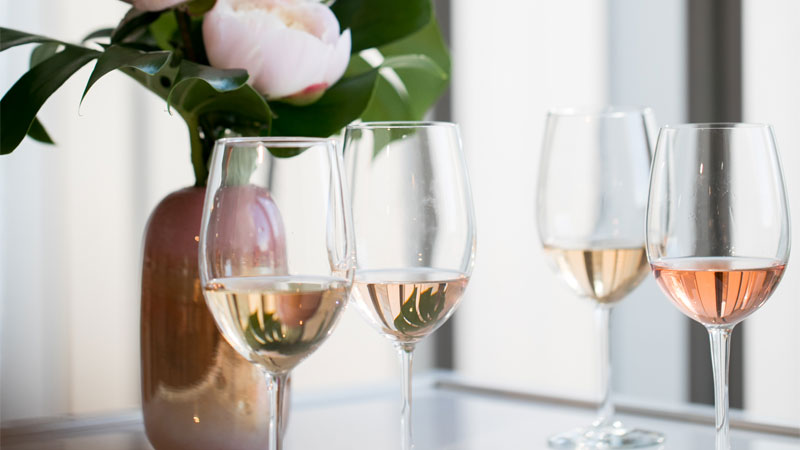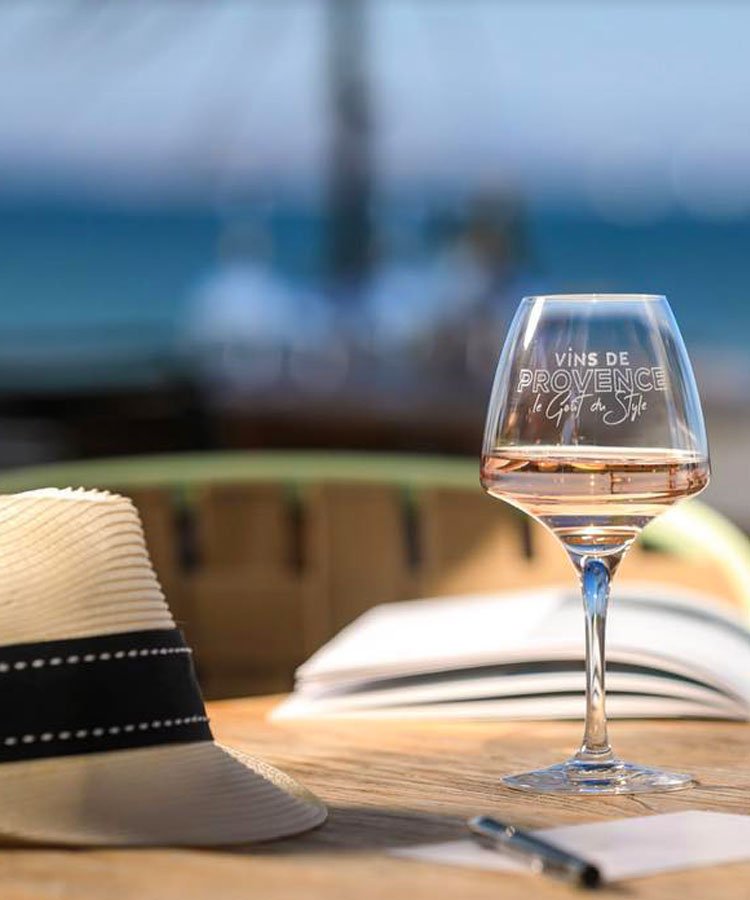
There’s no doubt you’ve seen Yes Way, Rosé emblazoned on tank tops and hashtagged in Instagram captions, screeched by tipsy millennials at brunch and scrawled in pink chalk on sidewalk sandwich boards outside bars.
However, while rosé is currently #trending, Wines of Provence has been leading the pink charge for centuries as the qualitative and historic leader in this dynamic category, crafting light, exquisite rosés that have set the bar for winemakers from across the world.
We visited Iconic Provence, a new, insight-packed content platform from the experts at Wines of Provence, to discover more about the past, present, and future of the rosy-hued darling of the wine world. If you haven’t yet, slip on those rosé-colored (reading) glasses — and, while you’re at it, fill your glass.
Rosé on the Rise
While rosé fever might only have swept the population (and your social media feed) within the last decade, the wine itself is by no means new. In fact, there are indications that winemakers have been thinking pink for thousands of years, and many of the first recorded wines, made in ancient Greece and Provence’s modern-day Marseille in 6th century B.C., were actually rosé.
But while rosé has been in existence for millenia, its consumption has only increased significantly in recent years: 37 percent of U.S. adults drink it today, compared with 24 percent in 2007. And it’s not only the seasoned oenophiles who are reaching for rosé. Of those 21 to 24 years old, 26 percent consider the wine to be “trendy.” Beyond that, in 2017, Wine Intelligence reported that rosé was the sixth most-consumed alcoholic beverage, and in 15 years, production and consumption of rosé wines are projected to increase to 25 million hectoliters — truly illustrating the power of pink.
The Pinks of Provence
It’s not just rosé in general that’s on the rise. The consumption of Wines of Provence in particular has increased year over year in the U.S., and in an article titled “How Americans Consume Rosé,” Forbes reports that “Provence stands out as the clear choice in rosé consumption.” The rest of the world agrees: There is a steady global demand for Provence rosés.
Provence’s popularity is no surprise. These rosés are timeless and iconic, and the region remains unfazed by fads, sticking with the style it’s best known for. Because these rosés are terroir-driven, rather than winemaker-driven, and made from vines grown specifically for rosé production, you know exactly what you’ll get when you pop the cork. And to ensure the continued quality of its rosés, Wines of Provence has even opened a research center — Le Centre du Rosé — dedicated to education, mastery, and conservation, thereby guaranteeing rosé lovers will be able to enjoy the region’s dry, light, and lovely wines for years to come.

La Vie en Rosé
Rosé is more than a wine; it’s a lifestyle. Three in 10 bottles of rosé sold around the world are French and, more than any other beverage, it evokes a certain joie de vivre, the wine no doubt linked to the aspirational lifestyles of Provence and the Côte d’Azur.
As rosé has become more popular, its packaging has been adapted by many producers, and it’s not surprising to see rosé being sold in small, portable cartons and cans that allow people to enjoy their wine on boats and at the beach, adding a little French glamour wherever they go.
It doesn’t matter whether you’re drinking by the pool or after a day on the slopes (après, rosé!), hosting a dinner party with friends, or relaxing alone in the bathtub, a rosé from Provence has the power to transform any situation from ordinary to extraordinary.
#RoséAllDay (and Every Day)
While it’s not necessary for there to be an occasion to drink rosé, there’s an impressive number of events that provide an excuse to don shades of blush and bubblegum and gather with fellow rosé fans to celebrate in appropriately festive form.
La Nuit en Rosé, for example, is the world’s first festival dedicated exclusively to rosé wine and showcasing more than 100 types. There’s also The Rosé Mansion, a “wine bar + amusement park + museum of science for wine,” as well as the rosé-focused picnic-meets-music-festival Pinknic. (And that’s just in New York City.) There’s even National Rosé Day in June (And while, sure, there’s a National Chardonnay Day as well, a quick hashtag search reveals about 1,800 posts to rosé’s roughly 17,800. No competition there.)
While Wines of Provence has been producing — and loyalists have been enjoying — quality rosés for years, the recent, massive proliferation of rosé and its rise as a cultural phenomenon demonstrate that the rest of the world is catching on — rosé is something worth celebrating.
50 Shades of Rosé
Well, maybe not 50 precisely, but one key part to understanding and appreciating rosé is recognizing the different shades of the rosé spectrum.
We’re currently witnessing a dry and pale rosé phenomenon. Production of pale rosé around the world has increased 4 percent in just the last five years (from 2013 to 2018), while darker hues now make up a much smaller percentage of the market than they did. There’s no doubt that the classically dry style of Provence rosés — with their light, subtle hues — has played a part in this shift.
However, while pale Provence rosés are dry by design, a light color doesn’t always indicate a dry wine — and, on the flip side, a deeper hue doesn’t mean a wine is sweet. Understanding the vast color array of rosé is key to finding one you’ll really love, and learning more about the winemaking process will help you gain a greater understanding — and appreciation — of rosé and its many varieties and complexities.

A Rosé by Any Other Name…
While Provence is the undisputed home of premium rosé wines and, due to the wine’s newfound celebrity status, innovative entrepreneurs in the imbibing biz and beyond have found ways to integrate the flavors of rosé and capitalize on its power, popularity, and panache with a myriad of interesting products.
In the beverage realm, rosé has transcended its category, expanding into other verticals in the form of brut rosé IPAs and rosé ciders, which have appeared in increasing numbers on bar menus and supermarket shelves. And who can forget the Summer of Frosé in 2016, when the frozen version of the beverage became the seasonal drink du jour? This trend was so pervasive that Bar Primi, the establishment credited with inventing the cocktail, later created a Winter Frosé to keep the party going all year long. And for those who want to have their rosé and eat it too, confectioner Sugarfina launched a line of rosé candy, including gummy bears, for which more than 12,500 people joined the waitlist.
While certainly not traditional takes on rosé — and lacking the sophistication and assurance of quality that one associates with wines of Provence — these fun and whimsical rosé-adjacent products demonstrate the wine’s prevalence, defining rosé as the drink of a generation — and Wines of Provence as the true pioneer.
This article is sponsored by Wines of Provence.

